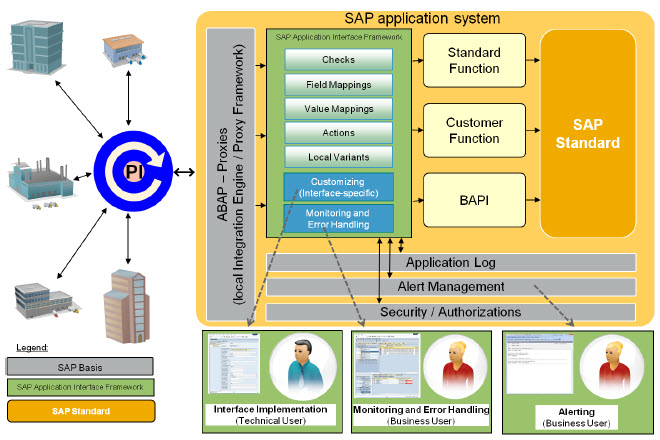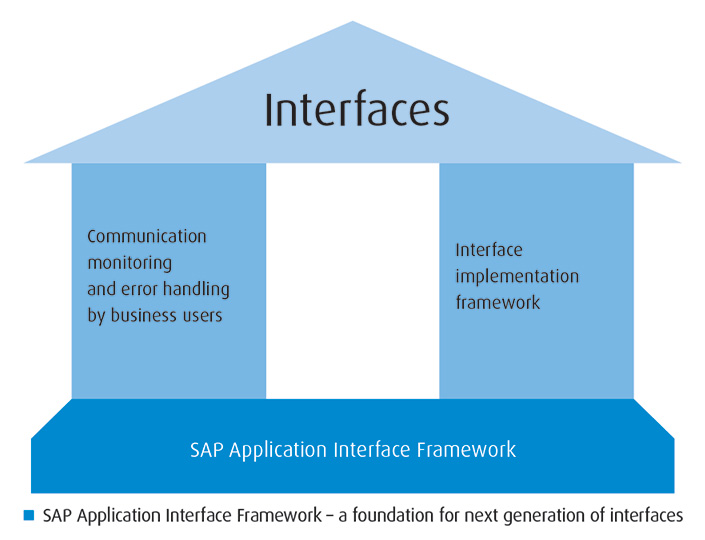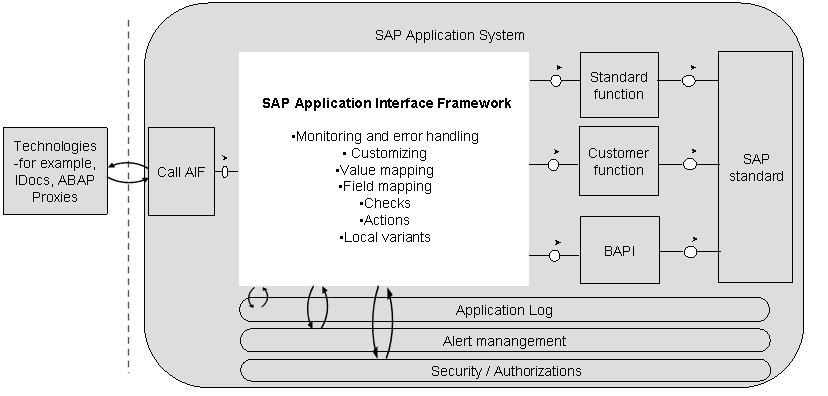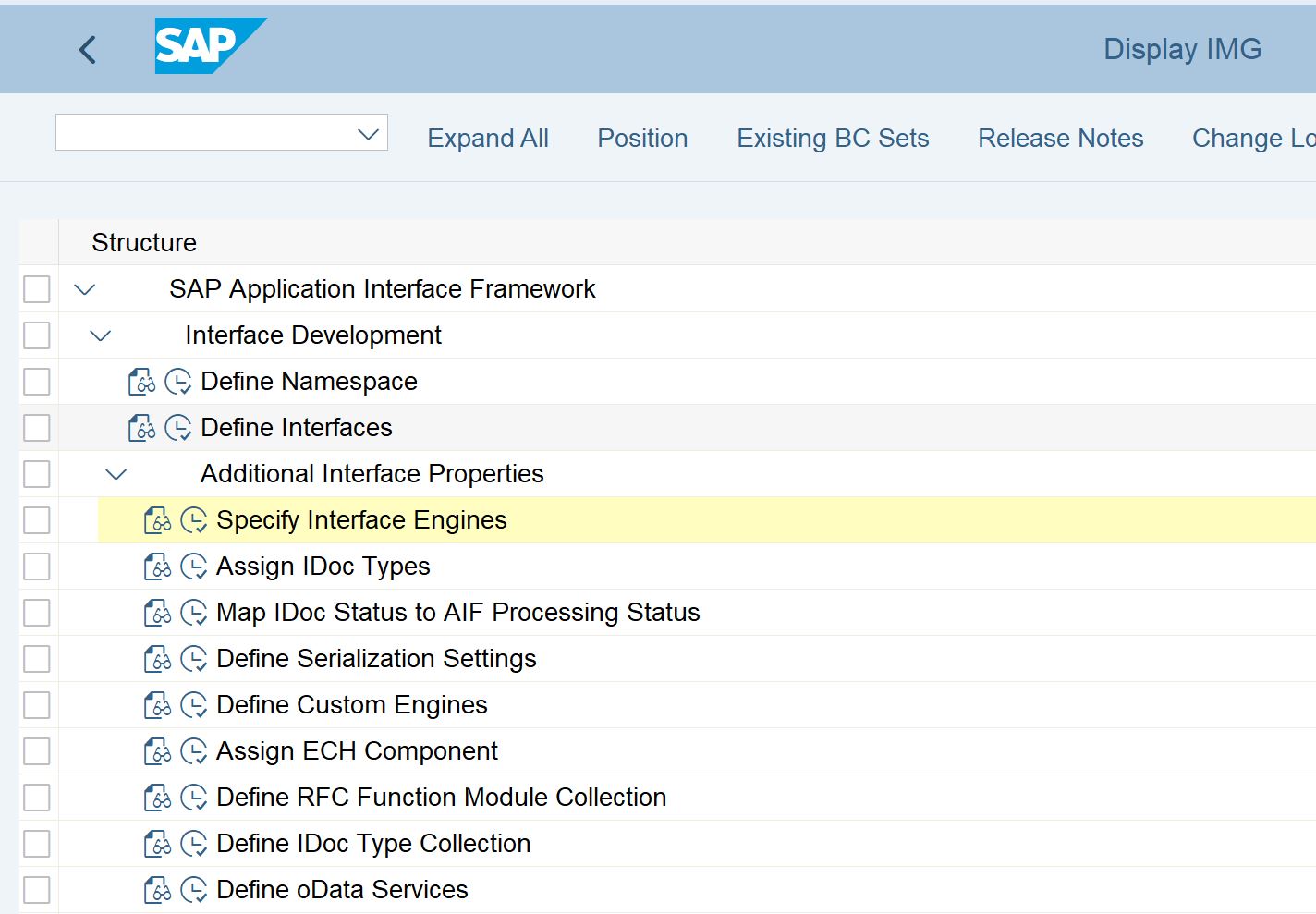what is SAP AIF & how does it work?
SAP AIF, or Application Interface Framework, is a powerful tool designed to simplify the integration of external systems with SAP. It allows users to streamline communication between different applications, reducing the complexity of managing data across systems. In this blog post, we’ll delve deeper into what SAP AIF is and how it works, and explore some key features that make it an essential tool for any organization looking to optimize their business processes. So if you want to learn more about SAP AIF and how it can benefit your business, read on!

- 1. Introduction to SAP Application Interface Framework (AIF)
- 2. Understanding Structure Mapping & Value Mapping in SAP AIF
- 3. How SAP AIF Facilitates Integrations
- 4. Benefits of Using SAP AIF
- 5. SAP AIF for Interface Implementations
- 6. How SAP AIF Empowers Business Users to Monitor Interfaces
- 7. Comparison of SAP PO & SAP AIF for Integration
- 8. Types of Interfaces Supported by SAP AIF
- 9. Multidimensional Benefits of AIF in SAP System Integration
- 10. Interface Monitoring & Error Handling with SAP AIF
1. Introduction to SAP Application Interface Framework (AIF)
The SAP Application Interface Framework (AIF) is an add-on to the SAP system that simplifies interface management across multiple forms. This comprehensive tool allows businesses to create, deploy, monitor, and manage all their application interfaces from a central location, streamlining the interfaces management process. With AIF, business users can easily monitor interfaces, receive alerts and notifications, and reprocess interfaces when needed, ensuring seamless integration. Implementing AIF offers several benefits, including improved efficiency, minimized downtime, reduced data errors, and increased visibility into interfaces. This blog will cover various aspects of SAP AIF, including understanding structure mapping and value mapping, types of interfaces supported by SAP AIF, and interface monitoring and error handling with SAP AIF.

2. Understanding Structure Mapping & Value Mapping in SAP AIF
The SAP Application Interface Framework (AIF) offers a flexible tool called Structure Mapping to efficiently handle all mapping scenarios required in integration. With this tool, users can customize mappings using standard AIF mappings, BRFPlus mappings, or implement their own custom criteria. Additionally, AIF offers conditions that can apply specific fixed values, value mapping, and checks that allow the use of alternative source fields based on custom criteria. Value mapping can also be done using customizing rather than coding, allowing for efficient development. Understanding Structure Mapping & Value Mapping in SAP AIF is crucial to unleashing its power in facilitating integrations, empowering business users to monitor interfaces and facilitating interface monitoring & error handling.

3. How SAP AIF Facilitates Integrations
SAP Application Interface Framework (AIF) provides businesses with a solution to facilitate integrations and streamline interface management. AIF is designed to introduce improvements to the business integration layer, making it easier to deploy, monitor and manage all interfaces. To facilitate integrations, AIF features process orchestration capabilities enabling FMS integration between the legacy systems and the latest applications. With AIF, interface implementations, monitoring and error handling are all enabled, allowing business users to monitor interfaces they are responsible for. AIF proves to be a valuable addition to the SAP system, as it provides businesses with standardization and prepares them to utilize its multidimensional benefits.

4. Benefits of Using SAP AIF
One of the most significant benefits of using SAP AIF is that it streamlines the integration processes in large enterprises. The SAP AIF provides a unified platform that offers simplified monitoring, alerts, and error handling, which enables businesses to manage, deploy, monitor, and run every application interface they need. The SAP AIF empowers both business and IT users to monitor interfaces they are responsible for, and maintain trace level app, operational and business data. Additionally, SAP AIF offers the flexibility to map transactional data to the regulation-required format (such as XML) and enables compliance with SAP Document Compliance. With SAP AIF, businesses can quickly identify interface errors, analyze them, and resolve issues in a timely manner, resulting in increased productivity and efficiency. SAP AIF improves the overall quality of interfaces by ensuring that they work consistently and predictably, regardless of location or other factors. Ultimately, using SAP AIF saves time and reduces costs by providing a single interface solution for all data exchange operations.

5. SAP AIF for Interface Implementations
SAP AIF is a powerful solution that helps businesses manage and streamline their interface implementations. With its integration capabilities, SAP AIF enables businesses to easily deploy interfaces and monitor them in real time. The solution’s configurable framework allows users to tailor interface implementations to their specific needs and easily manage errors and exceptions. By separating business logic from technical implementation, SAP AIF empowers business users to manage interfaces more effectively and with greater ease. Compared to SAP PO, SAP AIF provides a more streamlined interface management experience, making it an essential tool for businesses looking to optimize their system integration processes. Overall, SAP AIF offers numerous multidimensional benefits for businesses, including improved interface management, better error handling, and enhanced efficiency.

6. How SAP AIF Empowers Business Users to Monitor Interfaces
In the previous sections, we discussed the benefits of SAP AIF and how it facilitates integrations to streamline the management of interfaces. One of the major advantages of SAP AIF is that it empowers business users to monitor interfaces they are responsible for. With the help of master transactions such as /AIF/ERR and /AIF/IFMON, business users can easily set up alerts, view reports, and create authorizations. They can also integrate SAP AIF with other SAP monitoring tools to ensure seamless integration management. This user-friendly interface makes it easy for business users to identify and resolve any errors that may arise during interface processing, ultimately leading to improved efficiency and productivity. In the next section, we will compare SAP PO and SAP AIF for integration and explore the different types of interfaces supported by SAP AIF.

7. Comparison of SAP PO & SAP AIF for Integration
When it comes to integration, SAP has a few different options. In this section, we’ll compare two of them: SAP Process Orchestration (PO) and SAP Application Interface Framework (AIF). While both tools can help with integration, they have different focuses.
SAP PO is a more general integration tool that can integrate multiple systems, including SAP and non-SAP applications. It also offers a range of features, such as business process management, data mapping, and message routing. On the other hand, SAP AIF is more focused on integrating SAP applications specifically. It is an add-on that allows for easier access to data and functions within SAP applications.
Both SAP PO and SAP AIF have benefits when it comes to integration. SAP PO is a more robust tool that can handle more complex integration scenarios, while SAP AIF can offer more streamlined integration within SAP applications. Ultimately, the choice between the two will depend on the specific needs and priorities of the organization.

8. Types of Interfaces Supported by SAP AIF
SAP Application Interface Framework (AIF) supports various types of interfaces, making it a versatile solution for integration scenarios. It can handle data exchanges between SAP systems and non-SAP systems, as well as between different SAP systems. Some of the supported interfaces include IDoc, XML, CSV, and flat files. In addition, AIF can enable RESTful services, SOAP, and SAP Gateway services. With this variety of interface options, AIF makes it easy to implement integrations with minimal errors and maximum efficiency. In the next section, we will explore the multidimensional benefits of AIF in SAP system integration.

9. Multidimensional Benefits of AIF in SAP System Integration
The SAP Application Interface Framework (AIF) stands out as a versatile solution for businesses that require efficient and collaborative system integration. One of the key advantages of SAP AIF lies in the multidimensional benefits it brings to the table, simplifying the system to align with business goals. The centralization of SAP system integration is one of the core benefits of AIF, which allows businesses to build, deploy, monitor and manage all application interfaces with ease. In addition, SAP offers an in-depth analysis to identify custom codes, contributing to the overall simplification of the system. The cloud-based message monitoring application under SAP AIF lets businesses handle system errors quickly and efficiently. Ultimately, the rich set of capabilities provided by SAP AIF empowers business users to monitor interfaces proactively and make data-driven decisions. The benefits of SAP AIF are further evident when comparing it to SAP PO (Process Orchestration), where AIF is more specialized in application interfaces. Overall, SAP AIF is a robust solution for businesses who want to achieve effective system integration, improve transparency, streamline processes and drive better decision-making with the help of its multidimensional benefits.

10. Interface Monitoring & Error Handling with SAP AIF
In this blog section, the focus is on interface monitoring and error handling with SAP AIF. Having a framework that accommodates all types of interfaces (file and RFC interfaces, IDOC’s, proxies, Odata interfaces, etc.) regardless of whether you’re using PI (or PO) or not, is a significant benefit. SAP AIF provides master transactions /AIF/ERR and /AIF/IFMON for monitoring and individual error handling. Business and IT users can easily interact with these tools, making it simple to monitor and correct errors efficiently. It’s noteworthy that authorization rules can be set up to restrict access to monitoring and individual error handling tools for individual interfaces, providing an additional layer of security. Overall, AIF offers a simpler and more robust way to monitor and handle errors within an SAP system.


